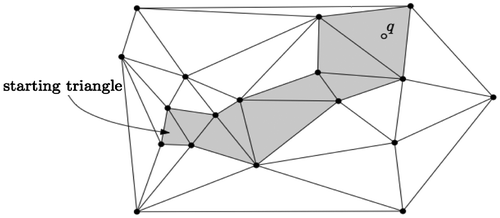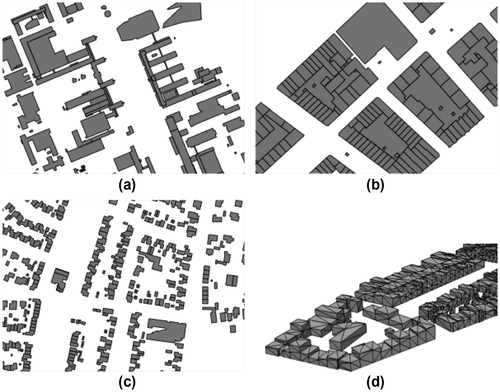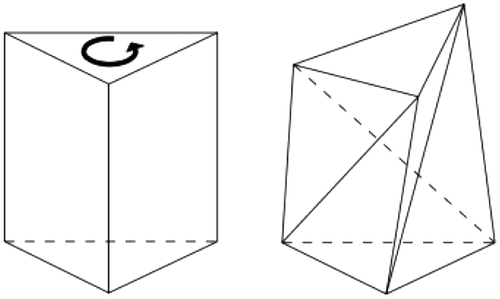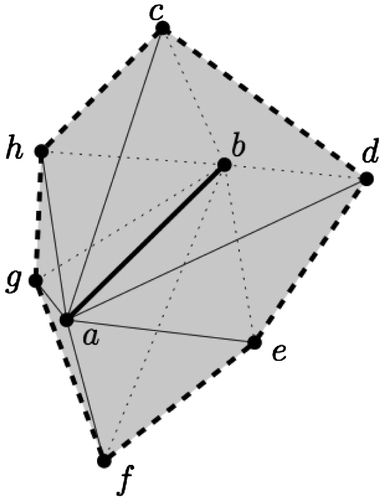Figures & data
Figure 1. (a) 2D polygons representing buildings footprints, and their constrained Delaunay triangulation. (b) 3D representation of the same buildings (polyhedra in this case, obtained by extruding the footprints in (a)) and their CDT (for clarity only the tetrahedra inside the polyhedra are shown here, but the whole convex hull in 3D is partitioned into tetrahedra).

Figure 5. A set of eight vertices yields a tetrahedralization with six tetrahedra. Out of the total 19 edges the six REs are stored (and shown in bold): <1, 3>,<1, 5>,<1, 7>,<2, 4>,<2, 6>,<2, 8>.

Table 1. The three tables for the data-set shown in Figure .
Figure 6. Walking in a 2D triangulation, starting from a given triangle to the query point q. In 3D, the principle is the same: the walk is performed from tetrahedron to tetrahedron.

Figure 8. (a) Two adjacent 3D features (both triangular prisms) sharing a surface (in grey). (b) The two features tetrahedralized with the seven REs in bold black.

Figure 9. Part of the footprints of the data-sets (a) campus, (b) kvz, and (c) engelen. In (d) a view on the kvz data-set tetrahedralized; notice that the ‘air’ tetrahedra are not shown.




